My Basket
Checkout using your account
Checkout as a new customer
Creating an account has many benefits:
- See order and shipping status
- Track order history
- Check out faster
- Home
- Buying a Greenhouse Guide
Buying a Greenhouse Guide
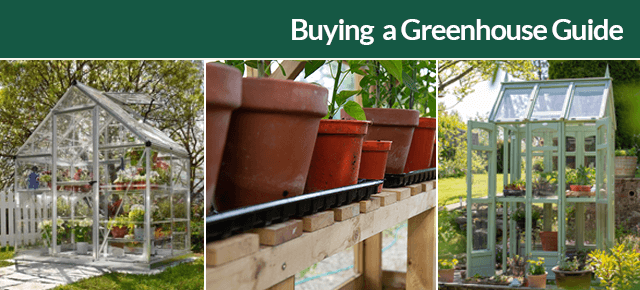

A greenhouse allows you to extend the growing season, increase your range of homegrown produce and cultivate plants not normally suited to the British climate. It is one of the best possible investments you can make for your garden.
The variety of greenhouses for sale provides lots of choice for finding the best greenhouse but can also be overwhelming for anyone not fully versed in greenhouse construction and terminology.
Suitable for beginners and seasoned gardeners alike, our greenhouse guide covers all you need to know before buying your greenhouse.
This guide will cover the topics below. Click a topic to go straight to the information you need.
Step One: Choosing Greenhouse Type and Size
Step Two: Choosing the Frame Material
Step Three: Understanding Greenhouse Glazing
Step Four: Doors
Step Five: Vents
Step Six: Greenhouse Staging
Further Greehouse Accessories
Greenhouse Base Information
Greenhouse Delivery
Greenhouse Installation
Contacting Us
Step One: Choosing Greenhouse Type and Size
Which type and size of greenhouse you buy will largely be dictated by how much available space you have in your garden. Greenhouses work best when located in a very sunny spot. Be sure to check the exact measurements in the specification and leave enough space around the greenhouse for maintenance.


Mini Greenhouses
Ideal for beginners and those with a small garden or balcony, mini greenhouses often have a lean-to design so they can be snugly positioned against a wall or fence.
These starter greenhouses are a chance to develop green fingers before moving onto a larger greenhouse.
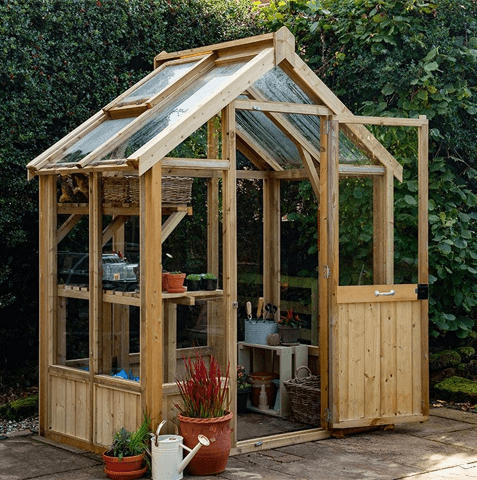

Small - Mid-sized Greenhouses
Encompassing greenhouses up to about 6ft x 8ft in size, these glasshouses are suitable for people who grow some of their own fruit and vegetables, as well as a selection of plants from seeds and plugs.
6x4 and 8x6 greenhouses are the most popular choice for the average gardener.
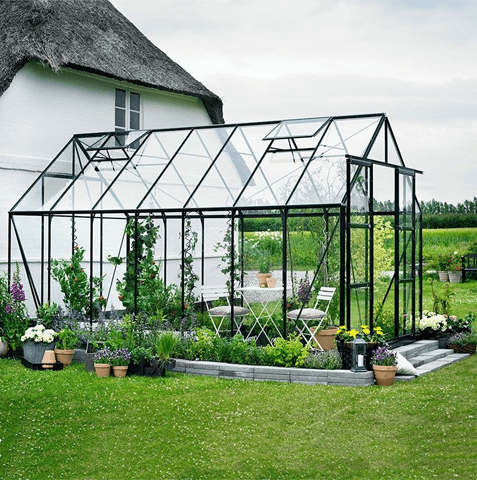

Large Greenhouses
Encompassing greenhouses bigger than a 6x8, and up to spacious 10x20s, this type of greenhouse suits experienced gardeners who need plenty of growing and overwintering space.
Our advice is to go as large as available garden space allows because gardening is addictive. We are yet to meet anyone who says that they wish they’d bought a smaller greenhouse.
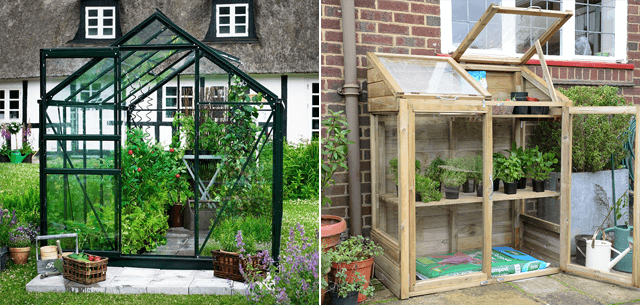

Lean-To Greenhouses
Lean-to greenhouses maximise garden space by sitting against a wall or fence, although when fitted with a back panel are versatile enough to position elsewhere in the garden too.
Usually designed with a pent-style roof, which slopes downwards, away from the wall or fence, lean-to greenhouses come in a wide range of sizes. Larger models can also be used as sunrooms.


Wooden Greenhouses
Nothing beats the charm of a wooden greenhouse. Incredibly attractive, the timber blends in perfectly with a garden’s natural environment.
Dip-treated wooden greenhouses are cheaper and usually have a 10-year anti-rot guarantee, but will require annual retreatment to validate the guarantee. Pressure-treated timber frames usually come with a 15-year anti-rot guarantee, and many manufacturers still recommend annual treatment.
Wooden frames can be painted too, offering the chance to create a completely unique style.
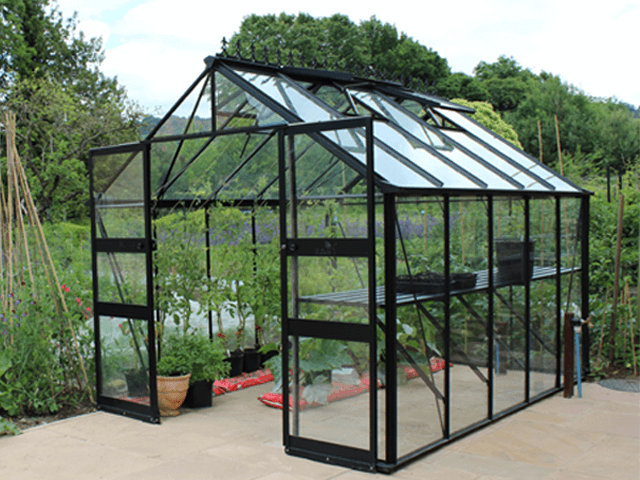

Aluminium Greenhouses
For a more modern look, choose an aluminium frame. The main advantages of aluminium greenhouses are that they are robust, durable, rust resistant and maintenance free.
More often than not, greenhouse aluminium frames are silver in colour, although powder-coated finishes in green, grey or black are also popular.
Aluminium greenhouses generally have guarantees ranging between 5 and 15 years. Many of them also include integral guttering, ready for connection to a water butt.
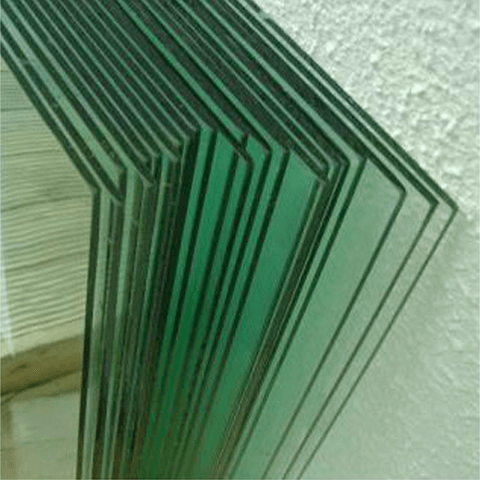

Glass
Glass lets in 90% of sunlight and radiates heat back into the greenhouse. This makes it a very efficient glazing option. However, it is not well insulated so temperatures inside the greenhouse will change rapidly. Shading and a heater will be required.
Horticultural glass is thin and will shatter into sharp shards so it is worth upgrading to toughened glass. It’s more expensive but far safer.
Glass requires regular cleaning but, as long as it’s not broken by a stray football or spade handle, it will last decades.
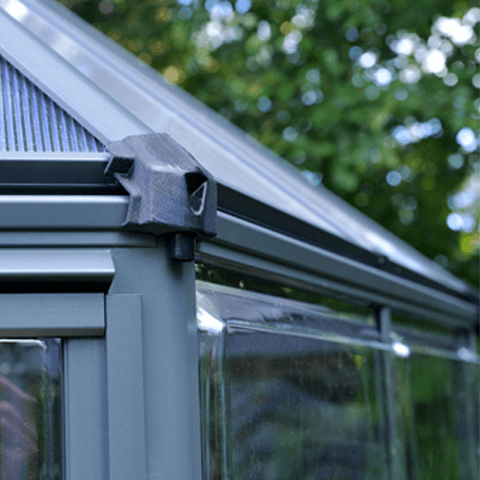

Clear Polycarbonate Glazing
Polycarbonate is virtually shatterproof, UV-stabilised and, with no sharp edges, easier to handle during installation.
Generally, polycarbonate glazing provides less light transmission than glass but greater protection from harmful UV rays and superior light diffusing properties. Diffusion prevents plants from getting scorched. Clear polycarbonate is ideal for nurturing germinating seeds.
Like glass, clear polycarbonate offers views of the garden. Though prone to scratching, it is easily cleaned with a hose down a couple of times a year.
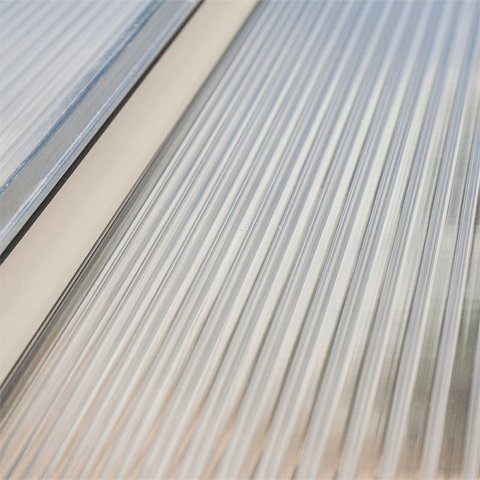

Frosted Polycarbonate Glazing
Like its clear counterpart, frosted polycarbonate is shatterproof, UV-stabilised and easier to handle during installation.
Its frosted construction diffuses light even further so light surrounds the plant rather than creating hotspots which can scorch a plant or cause it to unnaturally stretch for the best light. Some greenhouses are hybrid, so include both clear and frosted polycarbonate for the best of both worlds.
Both types of polycarbonate retain heat well. Twin-wall polycarbonate provides the best insulation due to the air pocket created between the walls. Polycarbonate lasts around 10-12 years.


Single or Double Doors
For a small greenhouse, a single door will probably be sufficient. It will also take up less wall/ growing space.
Double doors provide easier access, ideal when housing large potted plants, manoeuvring a wheelbarrow, or for wheelchair users.
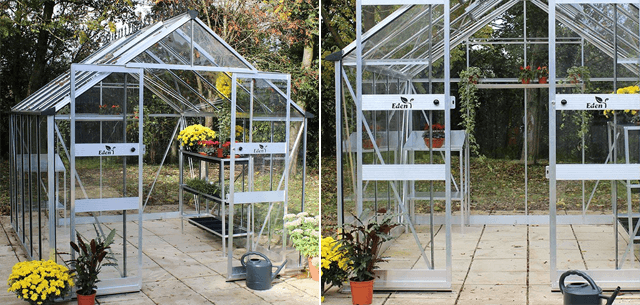

Sliding Doors
Sliding doors come into their own when the greenhouse is in a relatively confined space. Also, there’s no danger of them suddenly blowing shut in windy conditions.
Threshold Bars
A greenhouse without a threshold bar eliminates a trip hazard and makes manoeuvring easier, particularly for wheelchair users.
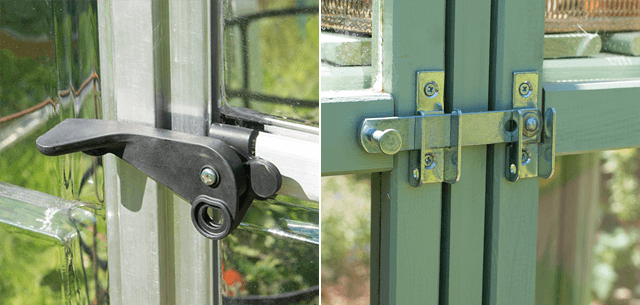

Lockable Doors
Valuable garden tools and, to a lesser extent, garden plants can be attractive to thieves. If this is a concern then choose a greenhouse with a lockable door.
Of course, when choosing a lean-to greenhouse/ sunroom which can also be accessed directly from your home’s back door, a lockable door is essential.
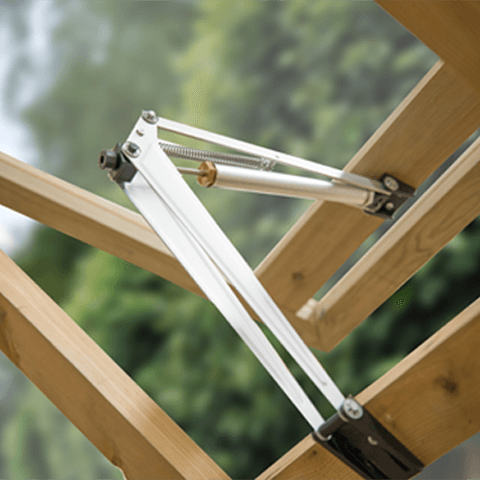

Roof Vents
The main vent for a greenhouse is a roof vent. They are essential for regulating the temperature inside the greenhouse.
Generally, the larger the greenhouse, the greater the number of roof vents. All other things being equal, choose a greenhouse with as many vents as possible.
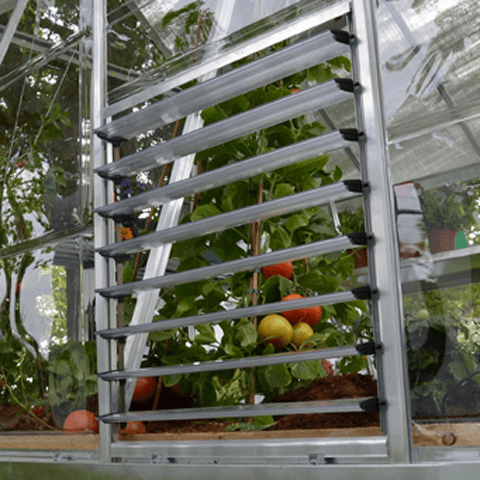

Louvre Vents
Louvre vents are another useful feature as they maximise airflow throughout the greenhouse. Air is drawn in through the louvre vent, which is positioned close to the ground.
The air heats up as it enters the greenhouse and is then released as hot air through the roof vent.
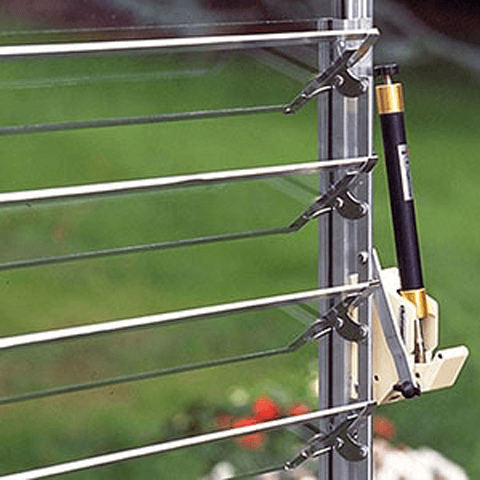

Auto Vents
As the name suggests, auto vents open and close automatically when the temperature inside the greenhouse rises or falls to a certain level.
They are particularly useful when a greenhouse is left unattended for large parts of the day.
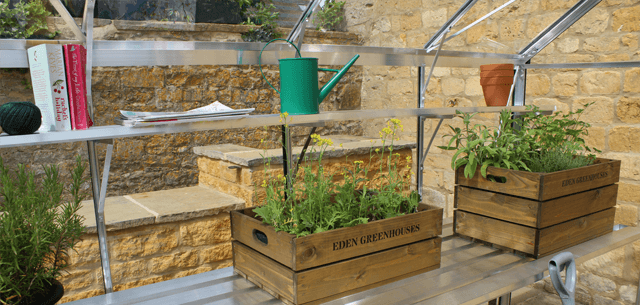

Check if the greenhouse includes staging or offers it as an upgrade. Staging is the term for the raised bench or table used to pot and care for plants, as well as carry out other gardening-related tasks. This means it is a key part of any greenhouse.
Shelving is equally valuable as it helps maximise the available greenhouse space. Considering the room required for compost, empty pots and tools, a greenhouse without shelving doesn’t leave much room for plants.
If your greenhouse comes without shelves as standard, purchase some separately or as an optional upgrade. Seed tray stands are another good acquisition.


All thermometers provide a current temperature reading, but one which shows the daily minimum and maximum temperatures too is best because it allows growing conditions to be monitored throughout the day.
Even though the temperature inside a greenhouse is warmer than outside, there are plenty of times over the course of a year when plants need that bit of extra heat. A greenhouse heater is the ideal solution.
If the greenhouse gets too warm, shading will be required. This can be painted on or roller blinds are an option with some greenhouses. Some roller blinds can even be linked to a thermostat.
Greenhouse Guttering and Water Storage
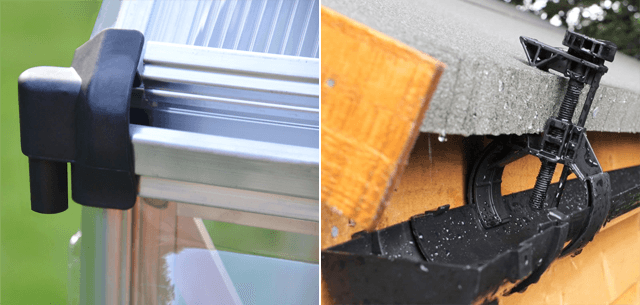

Some greenhouses are supplied with an integral guttering system which can be connected to a water butt. If not, it’s a good idea to buy one. We recommend selecting a guttering kit that is easy to install and comes with everything required to connect it to a water butt.
An external water butt allows rainwater to be harvested for the benefit of your plants. The water is obviously free, sustainable and better for plants than tap water. A water tank inside a greenhouse holds warmer water than tap water, for less of a shock to the plants. Also, the slight evaporation of the water will raise humidity levels within the greenhouse and reduce water loss from the plants’ leaves.
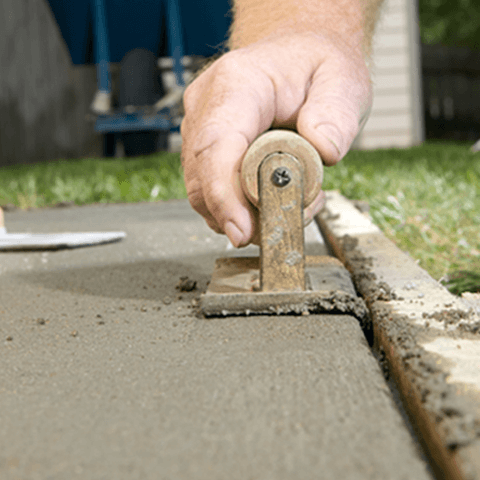

Concrete Bases
If using a base such as concrete or slabs, ensure it is level and reliable before the greenhouse is installed.
With concrete slabs, space them out and pour shingle in the gaps. Not only is this cheaper, it helps with drainage after watering the plants.
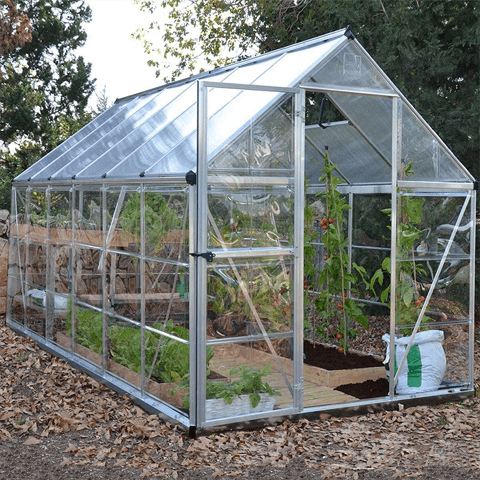

Perimeter Bases
Perimeter bases are another option. Use slabs or bricks to create a solid base for the perimeter frame, as well as a central walkway. This exposes the rest of the greenhouse area to the soil so that plants can be grown in the ground.
Some greenhouses come with an integral perimeter base. If it is necessary to select this base as an optional upgrade, it is definitely worth the extra money.
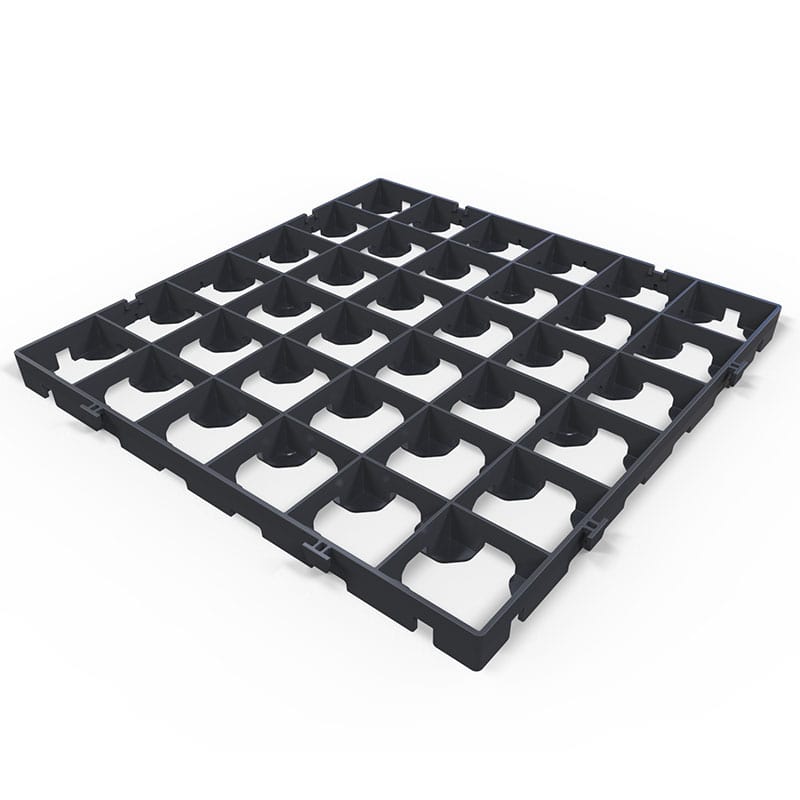

Plastic Greenhouse Bases
Shedstore sell plastic greenhouse bases as an easy to assemble kit. 100% recycled, these eco-friendly bases come with membrane and, though light, are extremely strong and durable. They can be filled with pea gravel before use.
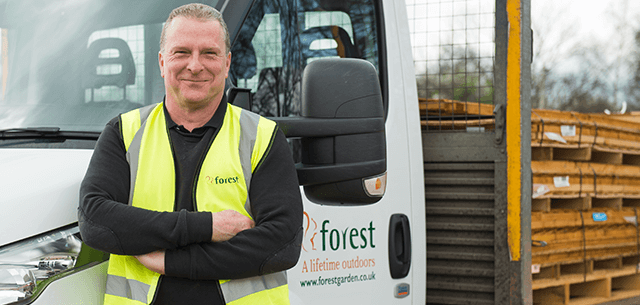

The lead time listed on the product page indicates when a greenhouse will be available for dispatch. During that time period, the manufacturer will be in touch to arrange the delivery date.
Any changes made to an order can cause the delivery date to change, so check everything is correct before ordering.
Delivery is free with the vast majority of Shedstore’s greenhouses. However, some remote postcodes incur surcharges. Use the postcode checker on the product page to check if surcharges will apply to your delivery.
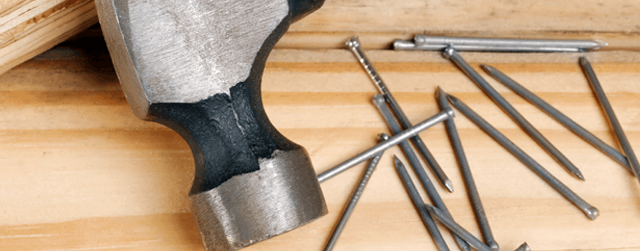

A no-hassle, professional installation service is available for some of our larger Forest wooden greenhouses. A suitable base, as described above, must be ready prior to the installation team’s visit.
For greenhouses where this service is not available, all of our manufacturers provide clear assembly instructions and comprehensive customer support.


Our friendly, UK-based customer service team are available to help answer any questions. Call them on 0333 003 0518 or use the Live Chat option onsite.
Take a look at our bestselling greenhouses below or view all our greenhouses here.




